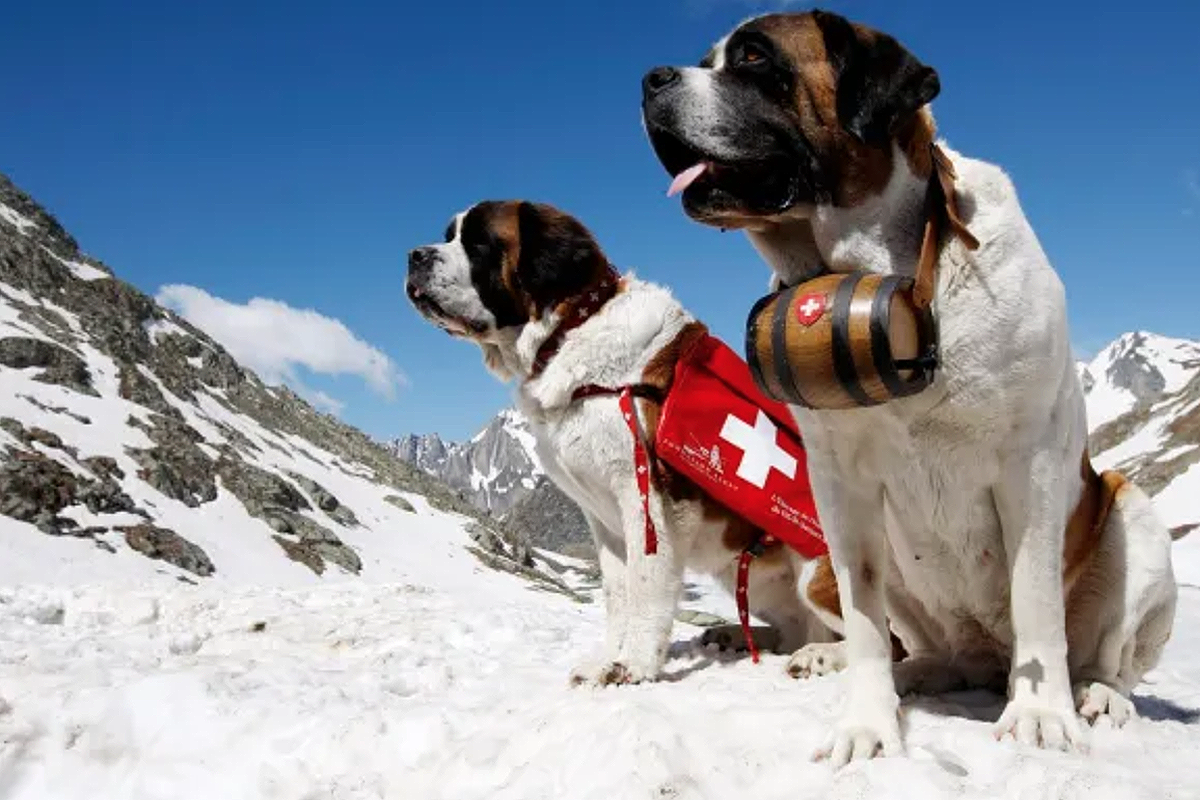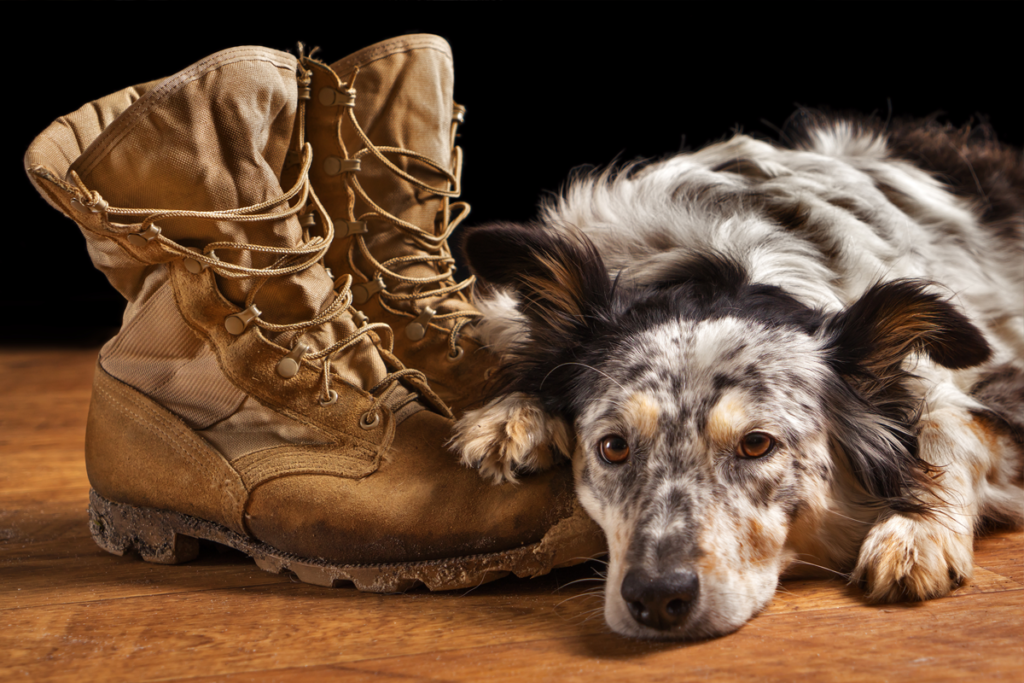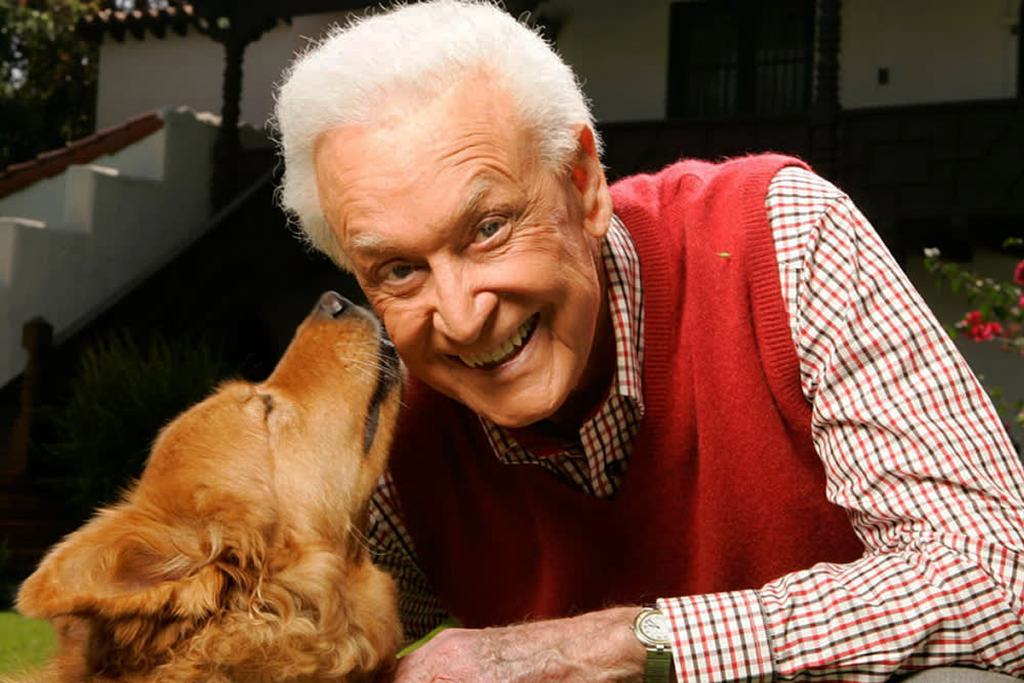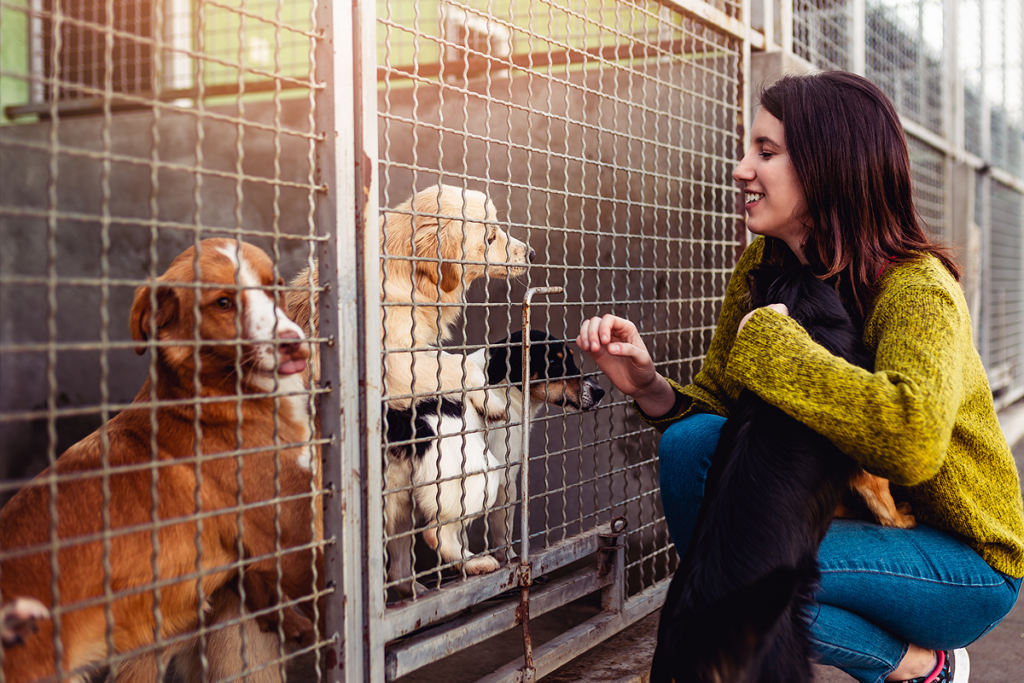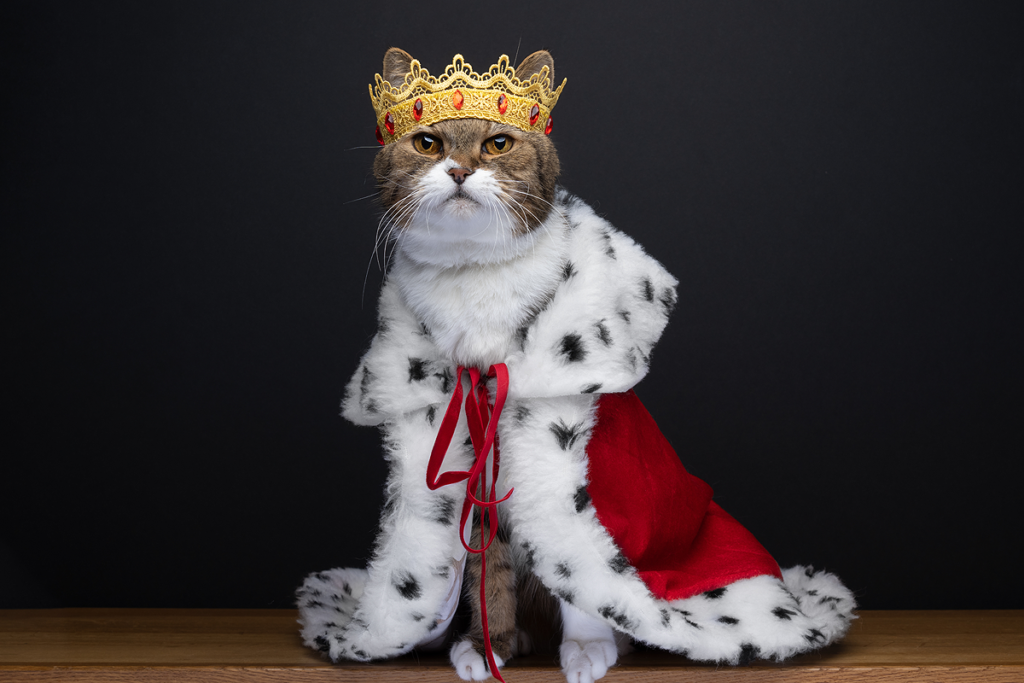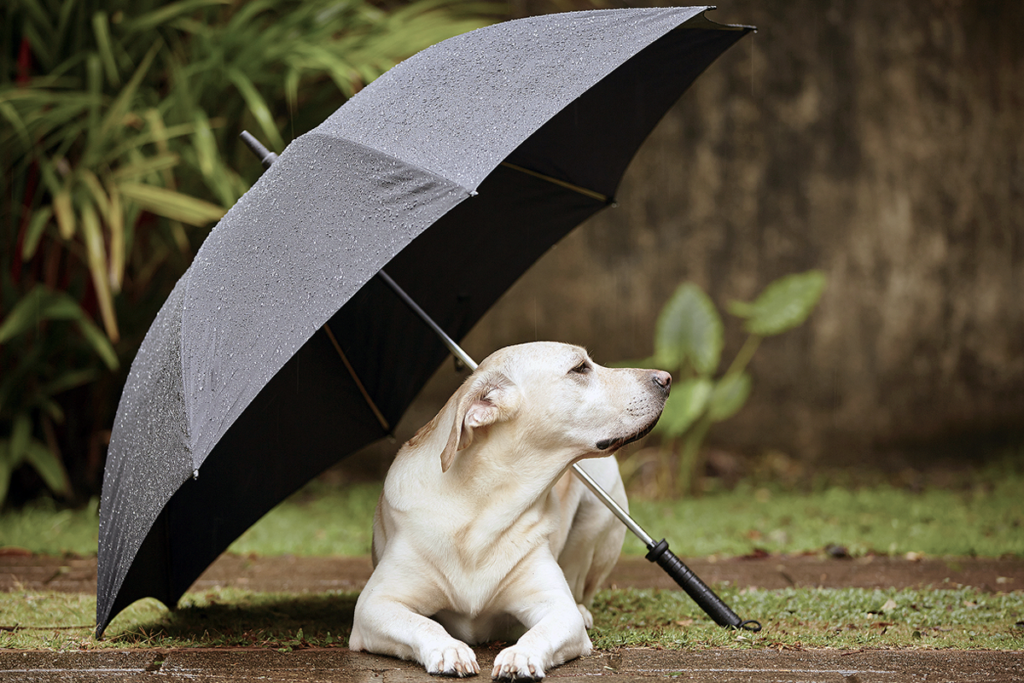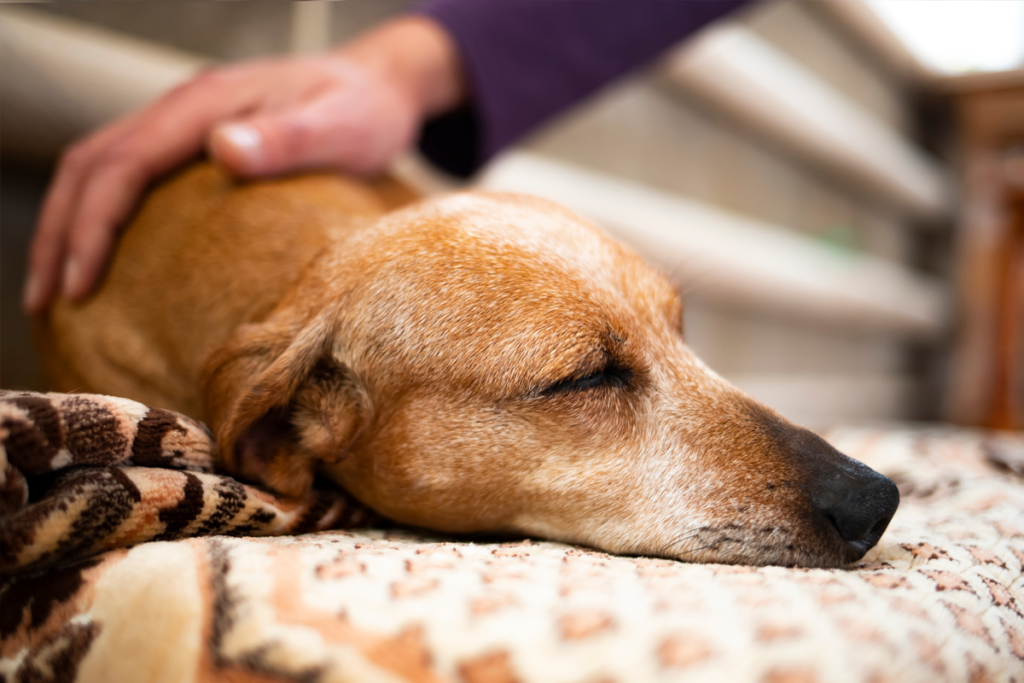For thousands of years, dogs worked alongside man. They mastered tasks essential to human survival and significantly assisted in our evolution. And we still depend on them today; as service dogs for those with mental and physical challenges, they continue to bring comfort and provide necessary capabilities to our daily lives. Even with technological advancements and modern implementations, search and rescue dogs are still vital in natural disasters, war zones, missing persons and cadaver recovery with a higher success rate than any man-made machines. One of history’s most revered rescue dogs is still talked about today, and paved the way for the future of canine search and rescue.
In the 17th century monks at the Hospiz auf dem Grossen Sankt Bernhard (the Great Hospice of Saint Bernhard) created a unique dog breed and are credited with giving birth to the first St. Bernard dogs. They picked the largest farm dogs from nearby villages, a mixed-breed assortment of cart-pulling mastiffs, French hounds, and Asiatic bulldogs in order to cultivate the ideal mountain dwelling breed. Initially, their task was simply to help locate the 50-mile trail, often heavily covered in snow, that led to the monastery. While the canons would spend their days praying and looking after guests, local guides would patrol the treacherous path along with their St. Bernard dogs. Given their keen sense of smell, hearty build and sure-footed gait, they were to quick to find a traveler who had succumbed to the challenging environment.
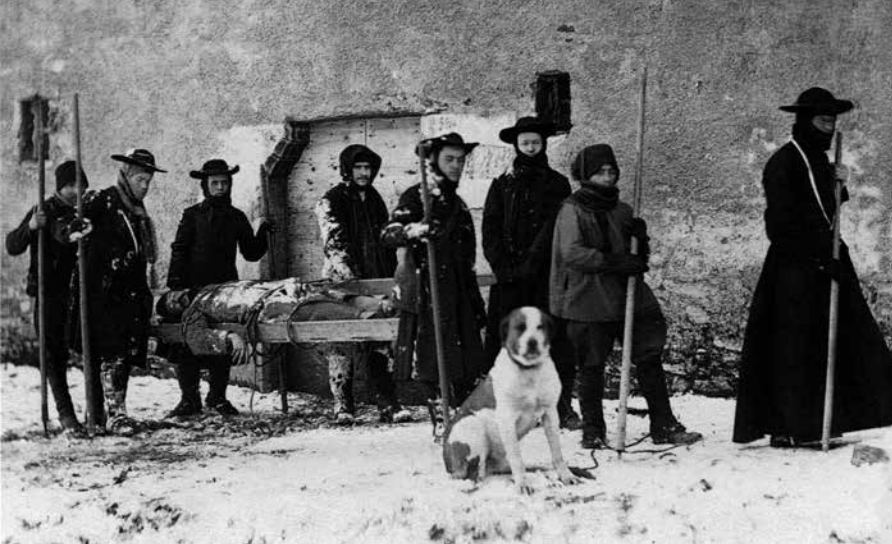
Located nearly two miles above sea level, the St. Bernard Hospice is located on the dangerous Great St. Bernard Pass, which connects Martigny in Canton Valais to Aosta in Italy. It has provided food and shelter for travelers for almost 1,000 years. The hospice and its legendary dogs are estimated to have saved more than 2,000 lives over the years.
One dog, in particular, is known around the world, and his legacy has been retold for thousands of years. That dog is Barry, the famous St. Bernard who saved 40 lives during his time at the monastery. There’s a great deal of myth and legend surrounding Barry’s life, with one tale telling of the time he hoisted a near-frozen toddler onto his back and carried him through a blizzard to be safely reunited with his family. However, what is documented, is that in 1812, a monastery servant carried an aged and tired 12-year old Barry down from the mountain and into Bern, where he lived his final two years in comfort, much loved by the local community.
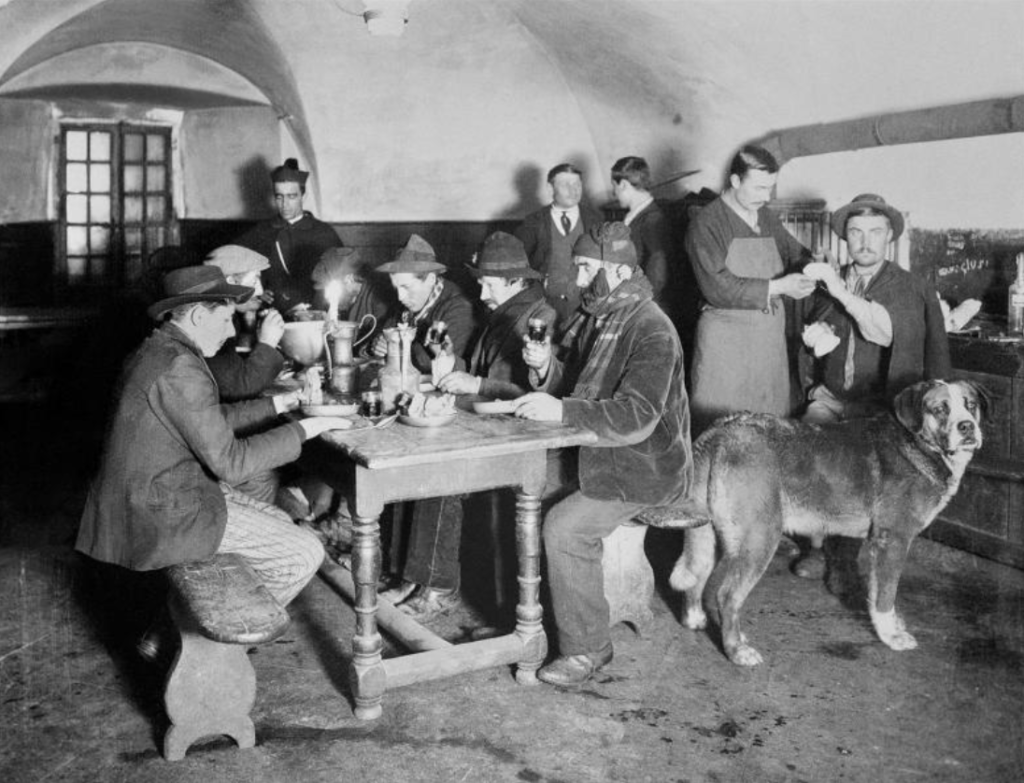
When he died two years later, in 1814, he was a household name and stories of his life at the monastery had traveled around the world. Given his heroic status, the hospice arranged for his body to be lovingly buried on the mountain, and his fur preserved. To this day, Barry stands in the Natural History Museum of Bern, his original coat encasing a replica of his imposing frame. However, the form you see on display barely resembles the clumsy, sweet, slobbery-jowled St. Bernard we know today.
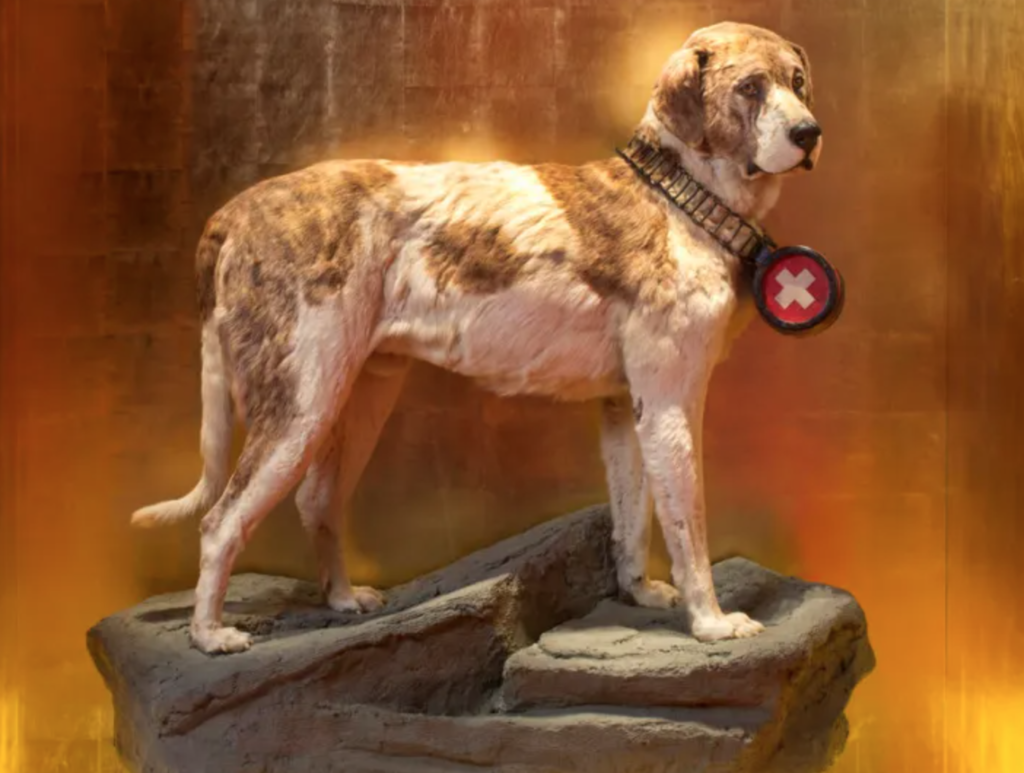
Rudolf Thomann, head of the Martigny-based Barry Foundation, the organization now responsible for breeding the St. Bernards from the Great St. Bernard Pass, explains why that is. In the 1820s, several mountain accidents all but eliminated Barry’s line; no one at the hospice had ever thought to give a specific breed name (they were called either “cowherd’s dogs” or Alpenmastiffs, if anything at all). Trying to replenish their kennels, the monks crossed Barry’s type with Newfoundlands, thinking the extra size would make them even heartier. What resulted was a huge, jowly dog with awkward feet, thick fur prone to snow clumps, and significantly reduced stamina.
Dogs like these were of no use to the rescue teams, but a savvy breeder slowly turned these new traits into a profitable leisure dog—the galumphing specimens we know from picture books and children’s movies. When he registered the new breed with the Swiss Kennel Club in 1880, he gave it the name of the saint that chained the devil to the mountain. But this was never Barry, who was a St. Bernard before St. Bernards existed.
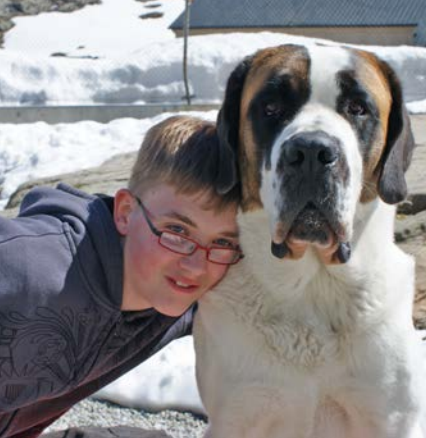
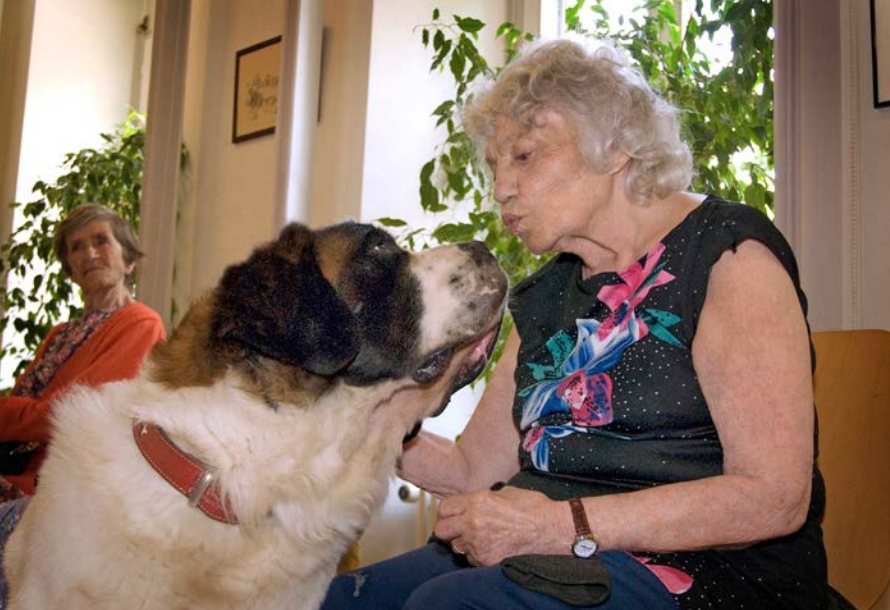
Adapting to a changing job market, St. Bernards, which can weigh more than 100 lbs, have had to play to other strengths, such as limitless patience when being patted.
“They are very social dogs. We go to care homes with old people and handicapped people and two years ago we started camps for young people with behavioral problems or a handicap. We had two camps in 2012, six camps in 2013, 12 in 2014 and it continues to grow – it’s a huge success,”
– says Rudolf Thomann, Director of the Barry Foundation
The Barry Foundation currently has 34 St. Bernards, including about six males (one of whom is always called Barry in honor of his illustrious predecessor). An average of 20 puppies appear each year and most are purchased for around $2,600 USD.
While it’s so endearing to know that Barry’s legacy, and lineage, continues, we know that there are equally brave, amazing and devoted dogs at local shelters who would love the opportunity to be rescued and to rescue in return.
Elena Passarello, a journalist for The Paris Review, said it best:
“So what exactly do we memorialize when we visit the Saint Bernard hospice today? When we buy tickets for a tour led by a fluffy, gentle giant that never would have made it up there in olden times? What do we look for when we make our pilgrimages to Barry’s erroneous Parisian memorial or to his compromised hide in Bern? If we debunk all the “facts” of this heroic dog—his appearance, his career, even his death—what are we really remembering?
Perhaps we aren’t remembering at all. Maybe Barry represents nothing that happened on the Pass, and rather what happens in our own homes. We see Barry in every dog that might be unfit for Alpine rescue, but that—in her devoted tail and affectionate tongue and concerned eyes—saves us every day. For among the many creatures that share our domestic lives, dogs are the animals most likely to run to us. To smell our panic and react. To warm our hearts until we can feel them beating in our chests again. These are the saintly beasts that, in sharing their lives with us, still work to keep the demons at bay.”

